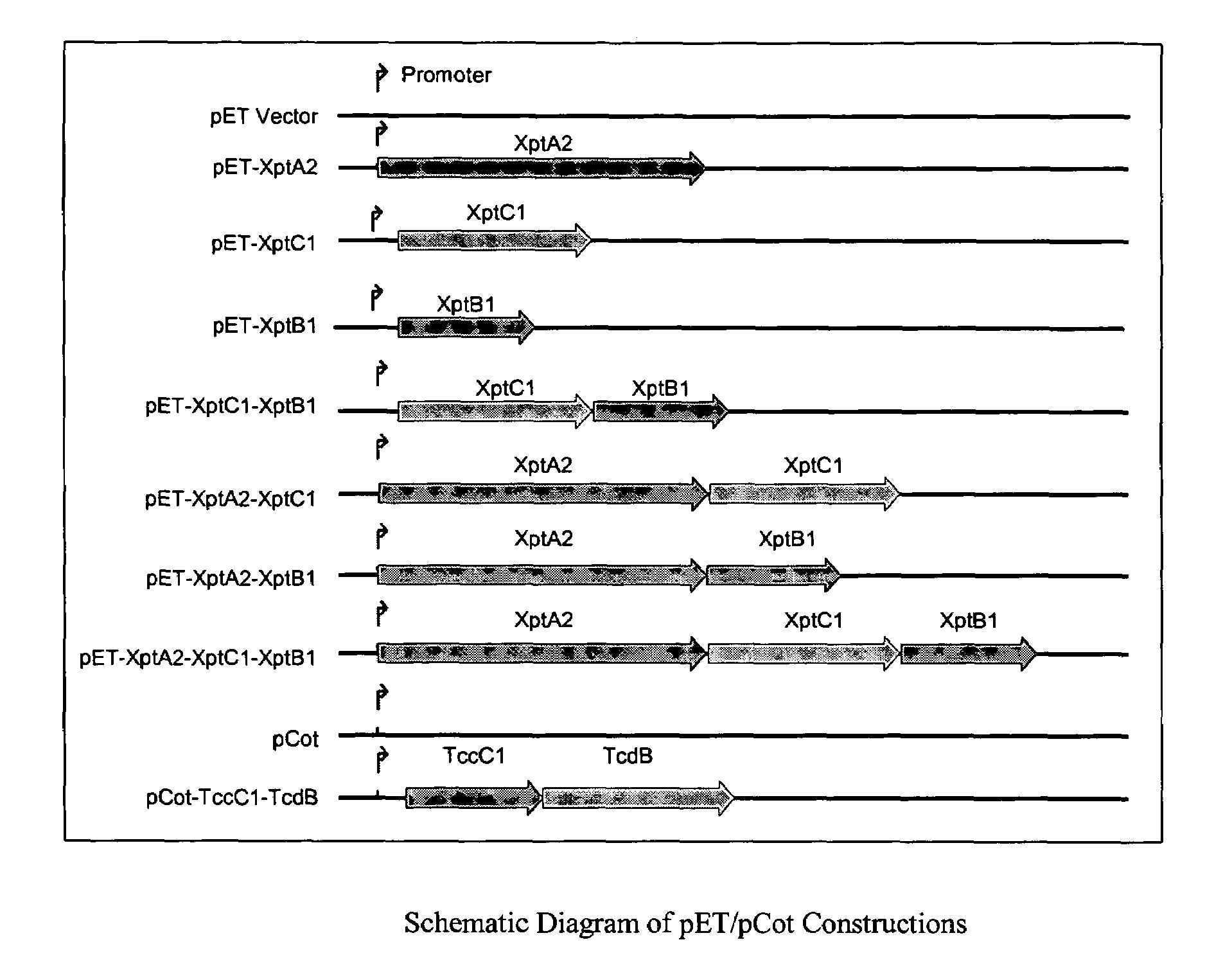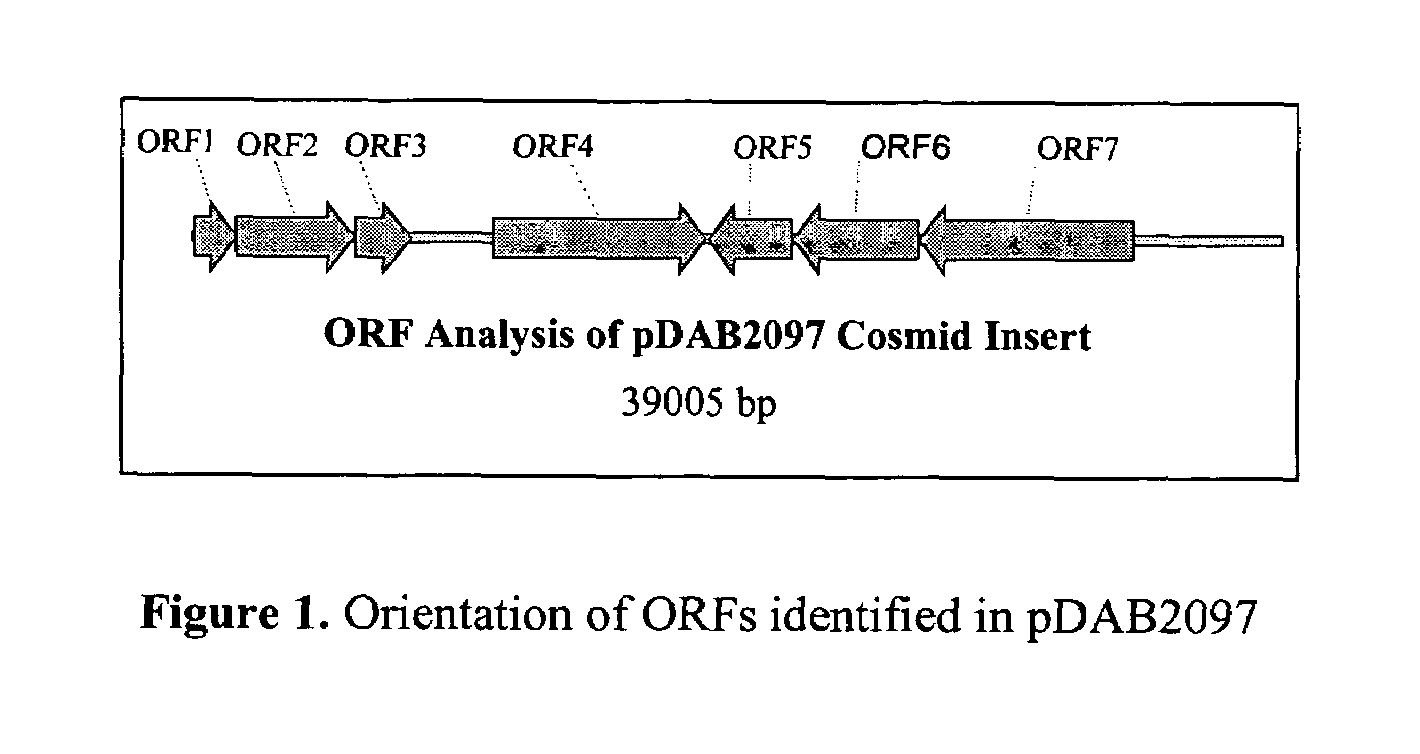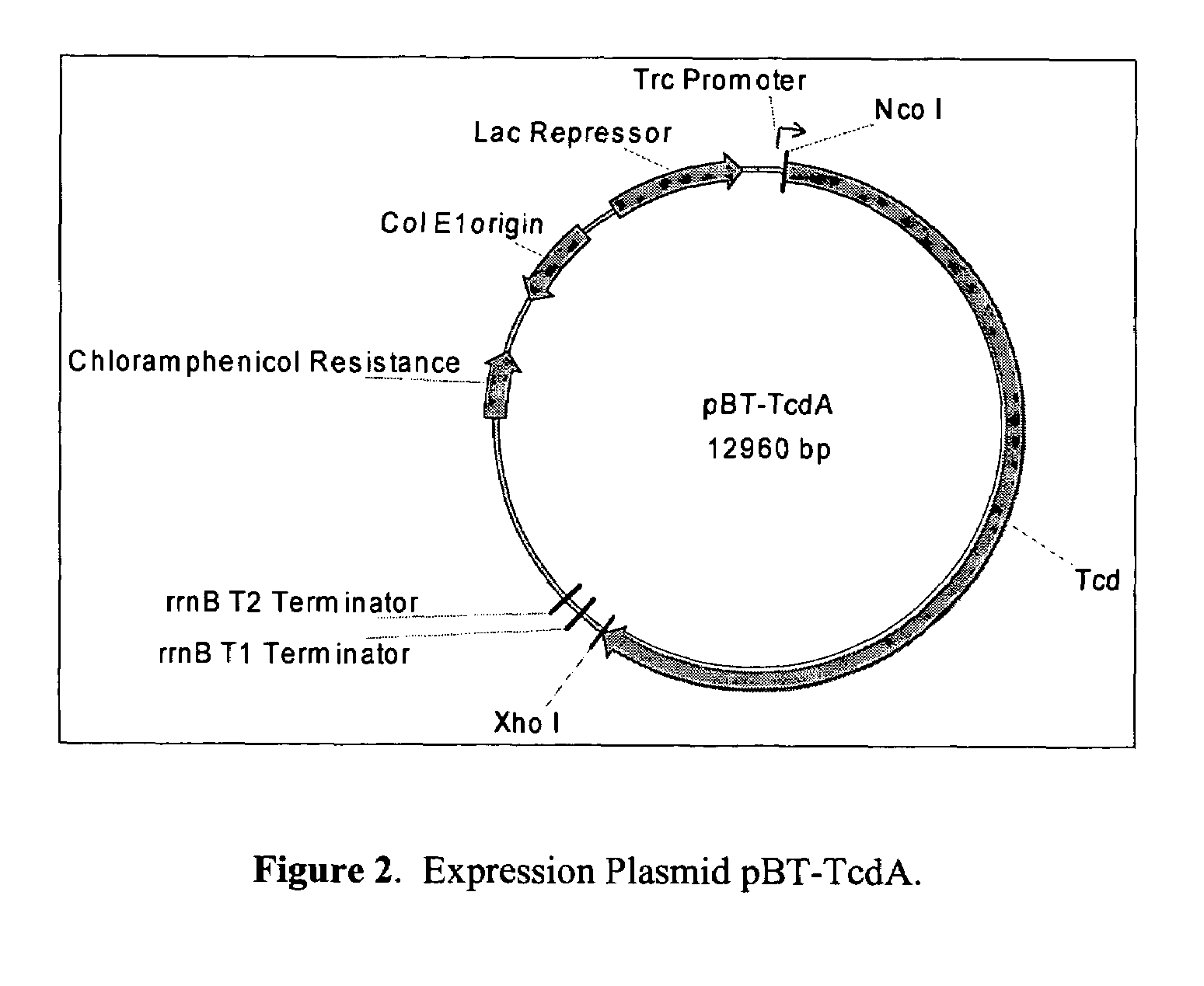Mixing and matching TC proteins for pest control
a technology of tc proteins and pests, applied in the field of mixing and matching, can solve problems that have not been thought possible, and achieve the effect of effective control of a wider spectrum of target pests and enhanced activity
- Summary
- Abstract
- Description
- Claims
- Application Information
AI Technical Summary
Benefits of technology
Problems solved by technology
Method used
Image
Examples
example 1
TC Proteins and Genes Obtainable from Xenorhabdus Strain Xwi
[0252]It was shown previously (U.S. Pat. No. 6,048,838) that Xenorhabdus nematophilus strain Xwi (NRRL B-21733, deposited on Apr. 29, 1997) produced extracellular proteins with oral insecticidal activity against members of the insect orders Coleoptera, Lepidoptera, Diptera, and Acarina. Full-length gene and TC protein sequence from strain Xwi are disclosed below. The methods used to obtain them are more fully discussed in concurrently filed U.S. provisional application by Bintrim et al. (Ser. No. 60 / 441,717), entitled “Xenorhabdus TC Proteins and Genes for Pest Control.” These sequences, including N-terminal and internal peptide sequences (SEQ ID NOs:1-5) are also summarized above in the Brief Description of the Sequences section.
[0253]In summary, a 39,005 bp fragment of genomic DNA was obtained from strain Xwi and was cloned as cosmid pDAB2097. The sequence of the cosmid insert (SEQ ID NO. 6) was analyzed using the Vector ...
example 2
Heterologous Expression of Toxin Complex Genes from Photorhabdus and Xenorhabdus
[0260]A series of experiments was done in which Photorhabdus and Xenorhabdus genes were expressed in E. coli. It is shown that co-expression of either the tcdA or xptA2 genes with specific combinations of the tcdB1, tccC1, xptB1 and xptC1 genes, results in significant activity in bioassay against sensitive insects. It is also demonstrated here that expression of the Photorhabdus genes tcdA and tcdB with the Xenorhabdus gene xptB1 results in significant activity against Southern corn rootworm (Diabrotica undecinipunctata howardii). Likewise, expression of Xenorhabdus xptA2 with Photorhabdus tcdB1 and tccC1 produces activity against corn earworm (Helicoverpa zea).
[0261]Two E. coli expression systems were employed for testing Photorhabdus and Xenorhabdus genes. The first relied on an E. coli promoter present in the expression vector pBT-TcdA (FIG. 2). Several plasmids were constructed in which polycistroni...
example 3
Insect Bioassay Results of Heterologously Expressed Toxin Complex Genes
[0288]A series of expression experiments was performed using the pBT expression system as described above. E. coli cells were transformed, induced and grown overnight at 28° C. The cells were collected, washed, normalized to equal concentrations and applied to Southern corn rootworm diet and bioassayed. As shown in Table 8, only when all three Photorhabdus genes, tcdA, tcdB1 and tccC1 were expressed in the same cell was significant mortality observed. Other combinations of genes did not result in significant mortality. For example, the specific combination of tcdB1 and tccC1 genes, which showed no insect killing activity, is shown in Table 8. Mortality was observed routinely when the genes on plasmid pBT-TcdA-TcdB1-TccC1 were expressed, and storing the cells at 4° C. for 24 hours before application to insect diet did not decrease or increase mortality significantly in these experiments (Table 8). Southern corn ro...
PUM
| Property | Measurement | Unit |
|---|---|---|
| Fraction | aaaaa | aaaaa |
| Atomic weight | aaaaa | aaaaa |
| Toxicity | aaaaa | aaaaa |
Abstract
Description
Claims
Application Information
 Login to View More
Login to View More - R&D
- Intellectual Property
- Life Sciences
- Materials
- Tech Scout
- Unparalleled Data Quality
- Higher Quality Content
- 60% Fewer Hallucinations
Browse by: Latest US Patents, China's latest patents, Technical Efficacy Thesaurus, Application Domain, Technology Topic, Popular Technical Reports.
© 2025 PatSnap. All rights reserved.Legal|Privacy policy|Modern Slavery Act Transparency Statement|Sitemap|About US| Contact US: help@patsnap.com



